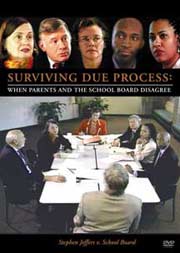According to
the American Academy of Child
and Adolescent Psychiatry, 50% of
children are bullied and l0% are
victims of bullying on a regular
basis. (The NYU Child Study Center, 2005.)
Kids who have learning disabilities (LD) or ADHD are especially vulnerable to bullying problems. Read Understanding Bullying and Its Impact on Kids with Learning Disabilities or AD/HD from NLDline.com.
The PACER Center, a national parent center in Minnesota, has established a National Center for Bullying Prevention. Read about their campaign to empower schools, parents, and kids to end childhood harassment.
With an emphasis on children with disabilities, you'll find toolkits for daily activities, online bullying prevention training for parents, and informational handouts.
What works-and doesn't work-in bullying prevention and intervention. Read What Adults Can Do for best practices in bullying prevention from the Health Resources and Services Administration.
Another excellent resource for parents, teachers and others who are trying to protect kids is a publication from the Office of Civil Rights, Protecting Students from Harassment and Hate Crime: A Guide for Schools. It includes a section on the definition of harassment based on disability and provides step-by-step guidance for developing a district's written anti-harassment policy.
You may want to ensure your school board has a copy of this publication from the OCR. Download a copy of the publication from Wrightslaw.
Take a Stand, Lend a Hand
Go to Stop Bullying Now! to find information, prevention, tips, and games.
You'll find webcasts and podcasts for kids about what bullying is and how to take a stand against bullying.
Free From EdPubs.org (ED001366B) Preventing Bullying: A Manual For Schools and Communities: This document addresses the problem of bullying in schools and defines bullying, discusses the seriousness of this behavior and the effectiveness of a comprehensive approach, and presents strategies for teachers, students, and parents to use when dealing with bullying situations. It also provides examples of innovative and successful approaches used by schools in different parts of the country. |





